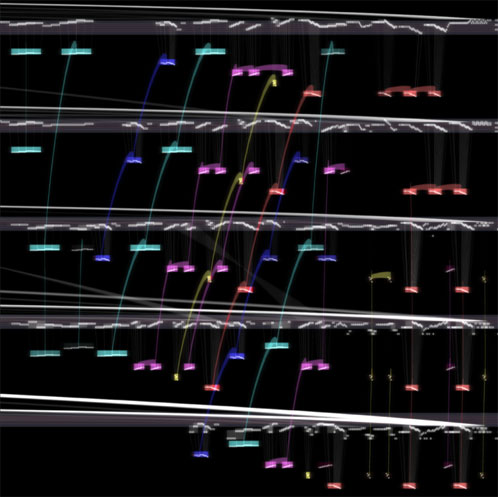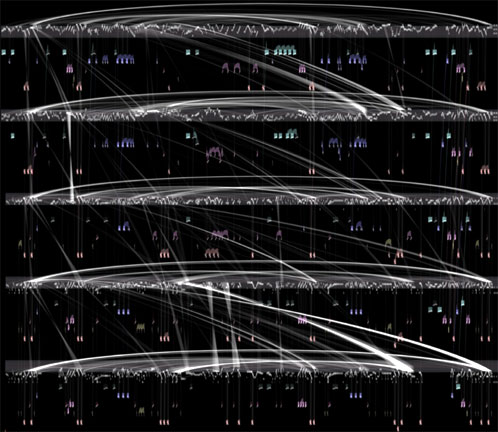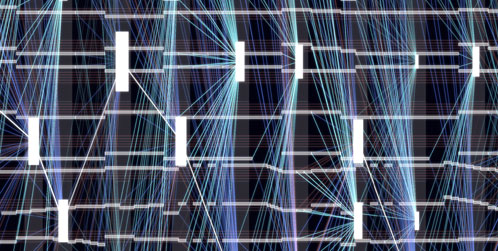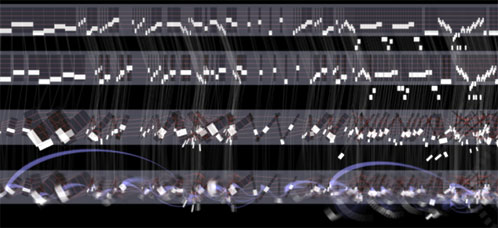MUSIC ANALYSIS
THE CODA

The coda to Mozart’s last symphony is a tour-de-force of five-part invertible counterpoint – arguably the most complex passage of music in the western canon. A fleeting passage of just 25 seconds, its charm to the ear belies its tremendous formal density.
ANALYSIS INPUT
Enlightenment analyzes the coda by examining two kinds of input:
- The score of the “Jupiter” symphony’s entire 4th movement
- The actual performance of its coda (the final 35 seconds) by ten musicians representing the sections of the orchestra (strings, woodwinds, percussion)–as recorded on both audio tape and two-camera high-resolution video

PRIOR KNOWLEDGE
The software has little prior knowledge of music, other than the following simple rules (heuristics):
- Repeated patterns are significant
- Relationships between adjacent pitches are important
- Basic features of how pitches combine to form chords are critical
FINDINGS

The search algorithms correctly identified and matched the five themes present in the coda. Thus it composed a correct picture of Mozart’s fugal structure.

In addition, the code found matching thematic material across the entire fourth movement.

Computer analysis also constructed knowledge of Mozart’s harmony.

Finally, the analysis revealed the differences between Mozart’s score and its interpretation by the musicians we recorded. This yielded an understanding of the performers’ interpretations and styles.
VIRTUAL PERFORMANCE
Musical analysis leads directly to musical synthesis, as the artwork keeps culminating, every 25 minutes or so, in a unique and autonomous performance of the Jupiter coda.
As Enlightenment performs its musical guesswork (initially very rough), it draws upon a database comprising all the pre-recorded notes. If needed pitches and durations do not exist in that database, the program bends and shapes nearby notes to fit.
This results in Enlightenment’s distinctive audio palette, far removed from the generic sound sample libraries available commercially.